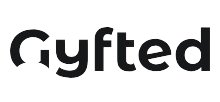Design and Product Development roles share a creative foundation but differ significantly in their approach and required personality traits. Using Gyfted’s data, we compared these roles across the Big Five personality traits—Openness, Conscientiousness, Extraversion, Agreeableness, and Neuroticism.

Personality Trait Comparisons
- Openness
- Design and Creative Arts: Exceptionally high openness, reflecting a strong preference for creativity, innovation, and exploration of new ideas.
- Product Development and UX: Also high openness but slightly less than Design roles, highlighting the balance between creativity and user-focused practicality.
- Conscientiousness
- Design and Creative Arts: Moderate conscientiousness, indicating flexibility and adaptability in the creative process.
- Product Development and UX: Higher conscientiousness, aligning with the structured approach required for product planning and execution.
- Extraversion
- Design and Creative Arts: Moderate extraversion, reflecting the mix of solitary creative work and collaborative design processes.
- Product Development and UX: Slightly higher extraversion, as these roles often involve greater interaction with stakeholders, users, and cross-functional teams.
- Agreeableness
- Design and Creative Arts: Moderate agreeableness, balancing independent artistic vision with the need for collaboration.
- Product Development and UX: Slightly higher agreeableness, reflecting a focus on teamwork and understanding user needs.
- Neuroticism
- Design and Creative Arts: Slightly higher neuroticism, potentially due to the subjective nature of creative work and feedback.
- Product Development and UX: Lower neuroticism, which supports a stable mindset needed for managing complex projects and user interactions.
Key Insights
- Openness is the standout trait for both roles, though designers exhibit slightly higher levels, reflecting their need for continuous innovation.
- Conscientiousness distinguishes the roles, with product professionals demonstrating a more structured and detail-oriented approach.
- Differences in Extraversion and Neuroticism highlight the more collaborative and stable nature of Product Development roles compared to the independent and emotionally nuanced aspects of Design.
Practical Implications
For employers, understanding these personality traits can aid in creating balanced teams that leverage the unique strengths of designers and product professionals. For individuals, this comparison helps identify the role that aligns best with their personal traits.
Design Tip: Combining creativity with structured problem-solving can enhance the impact of design work.
Product Tip: Fostering openness to new ideas while maintaining conscientious project management ensures innovative yet practical solutions.
By aligning personality data with role demands, both organizations and professionals can thrive in these complementary fields.
